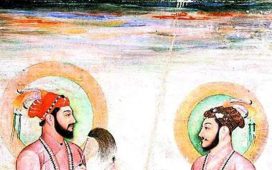When kirtan was first invented, the psycho-philosophy behind it was: at the time of kirtan, the vocal cord sings, the ears hear, and the hands and feet dance, and, thus, all the organs are kept preoccupied with the Divine. They are not allowed to move wherever they want to but are kept engaged. There is a popular Indian superstition that when ghosts are not kept busy, they break the necks of their prey. Similarly, if the sensory and motor organs are not kept engaged in the attainment of the Divine, they may lead one astray.
Kirtan is, therefore, most beneficial as it keeps all the organs fully engaged in a spiritual pursuit. However, during kirtan, if one listens to anything else, the mind will be diverted. To prevent these undesirable sounds from being heard, it is advisable to play some instrument during the kirtan, for example, a mridangam. One should not play any heavy-sounding instrument – like a dhak, a loud drum or a gong.
The mind prefers to hear a sweet sound, like that of the mridangam, than a harsh sound.
Thus, whenever a distracted mind hears the sweet music of a mridangam, it returns to its proper place. A remarkable science lies in kirtan.










